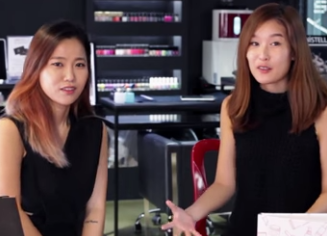All cultures have their own untranslatable allure—a certain something that you just can’t get anywhere else. The French have je ne sais quoi the Italians have sprezzatura; the Brits have that arch casual over-it-ness that comes from being nearly-almost-related to aristocracy. Americans have that pioneer John Wayne/Steve Jobs disrupt-it-yourself spirit. We also have sheets of emojis in the likeness of various parts of Kim Kardashian.
Koreans have their own thing. I’ve heard it described as “hybridity,” a term borrowed from art, theory, and language criticism (and that cross-sectional borrowing feels appropriate here). Put simply, it’s the ability to take little bits and pieces from disparate cultures and concepts and mix and fuse and concoct them all together. It’s like the semicolon of cultural adaptation. The result is something new out of something old, usually along the lines of “everything you liked about the old version, but better.”
You see it in food. On the streets of Seoul, for every place that advertised grilled octopus and kimchi stew were two others that boasted fried chicken, pizza, and pasta. But they didn’t front as American- or Italian-themed. They were very much Korean. Pasta was served with blazing hot red peppers and acid-tinged shrimp. Chicken was fried twice and coated in a dark, sweet, sticky sauce, then dusted with scallion. You don’t have to seek out “fusion” restaurants in Korea—they all pretty much come that way. It’s an active sort of fusing, too. Where Stateside eateries might try to push their uncompromising authenticity, the Korean counterpart would push its savvy mash-up of style and flavor—the fact that their Italian food isn’t ‘authentic’ is exactly the point. The melding makes new forms possible, almost always to pleasing results (and hey, if we’re talking about a combination of the great flavors of the world, what can go wrong?). And the method gives Korea a chance to own these melds, not just the right to reproduce something already out there. The hope here, if all goes well, is that the, say, Italian food you find in Seoul might not just be the best in Korea. It could possibly be the best in the world.
That’s the hope of hybridity. It’s a kind of creative editing process—conflation and marriage of disparate existing ideas.
The approach is hardly limited to food. You see it in fashion, too. I saw countless Korean girls pair Breton stripes with black Comme de Garçon-ish cropped linen culottes and Birkenstocks. How’s that for a trip around the world? There’s a globalism and “world culture” at work there, sure. But despite seeing four girls on four different days each wearing a t-shirt that read in bold serif English caps “AM I FRENCH YET?,” when we interviewed several girls, they all reported being overwhelming proud to be Korean. Sure, maybe they’d like to travel a bit, preferably somewhere with the same city-wide affinity for macarons, but part of that love is what makes them so uniquely and modernly Korean.
And of course, you see a whole mini world of hybridity in beauty. Brands like Erborian take French approach to Korean ingredients. Physical actual products like the VDL Triple Shot mashes up three usually standalone products (base, balm, and tint) into one. Triple-duty CC creams act as skincare, makeup, and SPF at once. Oils brighten and sunscreens prime. It’s like someone reassigned the jobs and assignments of everything in your medicine cabinet. Sure, the ten steps are there if you need them, but don’t expect K-beauty to stay within those bounds. The ingenuity is in the mix.
And this is the feeling of what it’s like to be there too. If the French are a little self-satisfied (and well they should be), and the Americans are “aspirational,” the Korean vibe seems much more inventive (or re-inventive anyway). Whatever there is elsewhere in the world, the Koreans have it too. They just made it their own.














